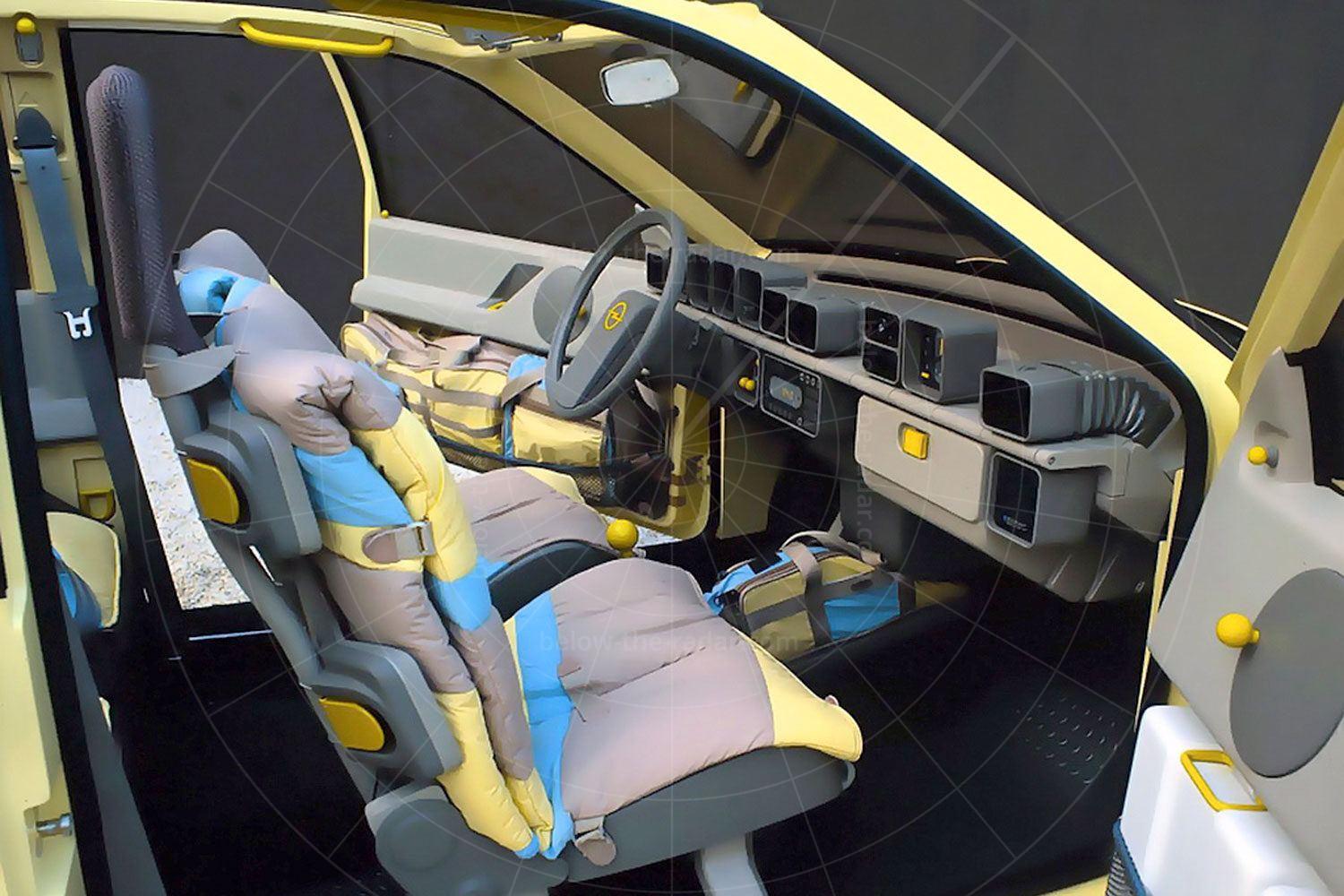When it was unveiled at the 1983 Frankfurt motor show, the Opel Junior was touted as being Germany’s sauciest car, which didn’t seem to be the ideal word to describe what was actually a very intelligently designed small car concept.
The aim of the Junior was to provide transport in comfort for up to four people, while occupying as little road space as possible. That meant that not only did the car have to be as space efficient inside as possible, but it also had to sit rather taller than was normal for small cars at the time. Although cars have become taller to allow greater interior space without having to be significantly longer or wider, when the Junior was unveiled it was unusual – although far from unprecedented – to simply build upwards.
Compared with the Nova/Corsa of the time, the Junior was 90mm taller and 40mm wider. But it was 210mm shorter, which was very important when it came to making the car more manouevrable around town, which was where the Junior would predominantly be seen. Two-thirds of the car’s overall length was given over to passenger space, with the interior incorporating some very clever design touches. The cabin was built so that it would be much easier than normal to build the car with either left or right-hand drive, mainly helped by the use of a symmetrical unit which included the pedal box, handbrake steering column and heating/ventilation system.
Scattered around the cabin were cubby holes galore, with consoles and lockers under the seats and beneath the dash. The dash itself was made up of a set of instruments which were of a modular design. The basic set of gauges consisted of the speedometer, fuel gauge and coolant temperature gauge, but by pre-wiring the dash to accept extra dials there was no need for any further wiring to be installed once the car had left the factory. These extra dials, which would be cubic (like the standard set of instruments), would just slot into place and make contact with the wiring already in place.
With flexibility being the key to the Junior’s cabin, it was no surprise that the radio could be removed easily to be used as a portable set. The two-piece plastic roof could easily be swapped for a canvas item or even a see-through panoramic panel to open up the interior altogether. As if this wasn’t enough, the seat covers could be removed and used as sleeping bags, while the removable stowage cases in the doors could be used as shopping bags. But that wasn’t all; the dash-mounted clock could be removed and used as an alarm clock and it was even envisaged that this stowage container concept would be expanded to include a travel set with razor and hairdryer.
Although the Opel Junior’s raison d’être was economy, it also had to be fun to drive. With its 55bhp 1.2-litre engine it could sprint from a standing start to 62mph in 15 seconds and go on to achieve a top speed of 94mph, which wasn't exactly breathtaking performance but it was very respectable for a car that aimed to be as cheap to run as possible. Such performance was possible with so little power because the Junior weighed just 650kg, giving it a power to weight ratio of 85bhp/ton which put it on a par with production cars which were perceived to be rather more sprightly. And the fact that it was capable of travelling over 70 miles on every gallon of petrol was also pretty impressive; there was nothing else on the market at that time which could equal the Junior’s blend of performance and economy.
The concept’s slippery shape was also key to achieving this balance; with a drag coefficient of just 0.31 it was amazingly aerodynamic for such a small car. This was achieved by paying great attention to detail with the fit of the bumpers, glazing, headlights and door handles, all of which sat flush with the bodywork.
| Vital statistics | |
|---|---|
| Debut | Frankfurt 1983 |
| Engine | Front-mounted, 1.2-litre, 4-cylinder |
| Transmission | Front-wheel drive |
| Power | 55bhp |
| Top speed | 94mph |
| 0-62mph | 15 seconds |
















